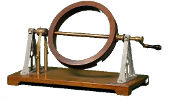» Condensation Hygrometer (0339)
Immagini
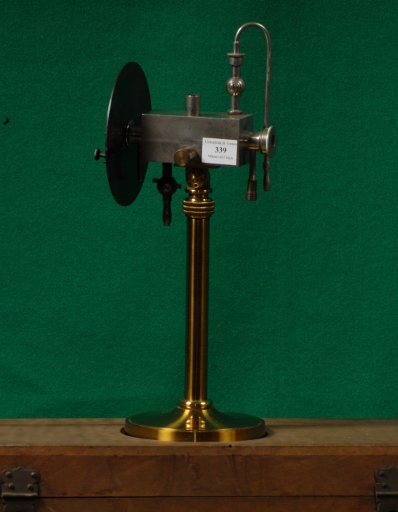
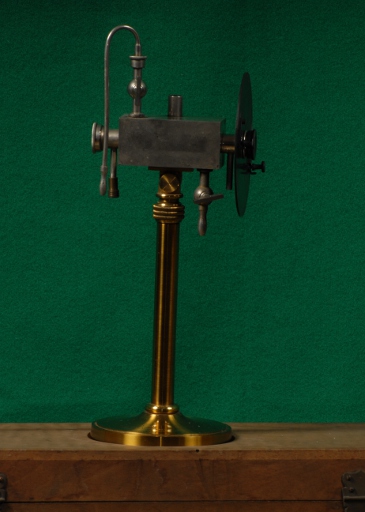
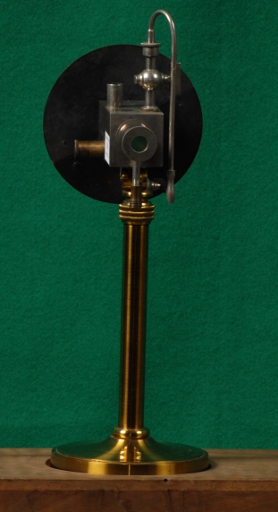
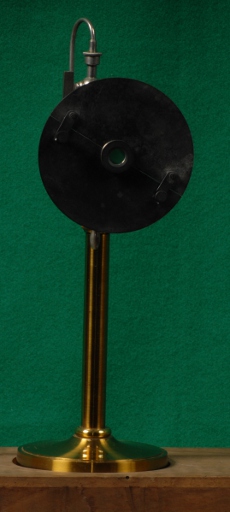
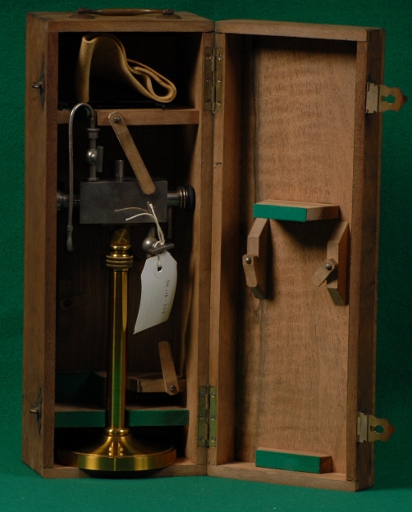
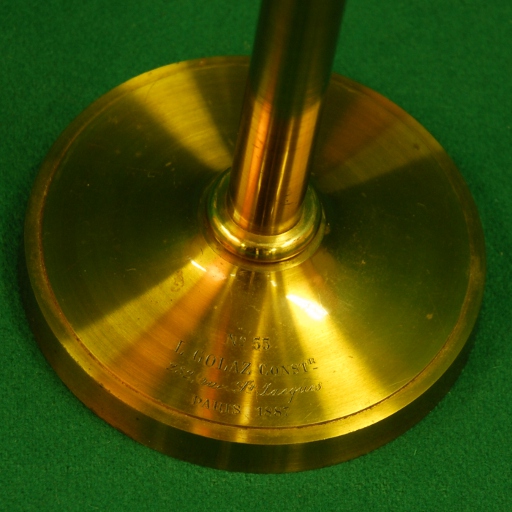
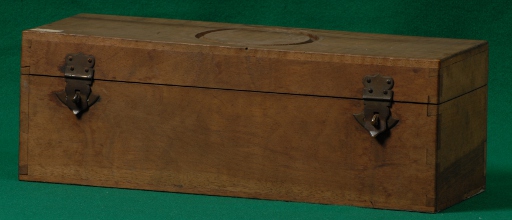
DESCRIPTION
Exhibit 339 is a hydrometer designed to measure the humidity in the air. The absolute humidity is defined as the number of grams of water vapor present per cubic meter of air while the relative humidity is the ratio u between the mass m of water vapor present in a certain volume of air and the mo that is needed to make it saturated. This ratio, assuming valid clear up to the point of saturation Boyle's law, equals the ratio p/po between the effective water vapor partial pressure and the partial pressure at the same temperature that would saturate the air, po, that one can read from a table. To determine u, measure p.
The hydrometer invented in 1883 by Andrè Crova, a professor at Montpellier, is a condensation hydrometer designed to measure p. Respect to other hydrometers of this type which usually produce condensation on the outside, this version produces condensation on the inside of a volume cooled from the outside. This choice improves the precision by avoiding air currents which can disturb the external thermal layer of the usual type of hydrometer.
This hydrometer is constructed in the following manner: A thin metallic tube, nickel-plated on the inside, is terminated on one end by a ground glass and on the other by a long focal-length lens that permits observation of the inside. A darkened screen eliminates external light disturbances. Looking through the lens one sees the ground glass and, by reflection the internal walls of the tube, in an image that seems a ring with a radius three times that of the ground glass.
The tube is contained in a metal parallelepiped box, filled with carbon sulfide and furnished with two valves extended with rubber tubes. Air enters through the first to bubble through the carbon sulfide and cool it by evaporation. The second serves to empty the external volume. At the two extreme ends of the tube, there are openings to let pass the air of which one desires the hydrometric state. Through another opening it is possible to insert a thermometer for the determination of the dew point which is the temperature of the carbon sulfide in contact with the tube.
When the carbon sulfide is sufficiently evaporated and one has reached the dew point, one sees the ring image of the glass covered with dark spots: one stops the flow of air, the dark spots slowly vanish and at this point one measures the temperature. Again allowing the air to flow, the dark spots reappear and one stops the air, and takes another temperature reading to reduce error. The external temperature is measured with another thermometer.
From the dew point, one reads the water vapor partial pressure from a table. In conclusion, one measure two temperatures, the ambient temperature to and that of the dew point and reads from tables the two corresponding partial water vapor pressures.
The instrument is conserved in its proper wood box.
ISCRIZIONI
- Sulla base è inciso: N.55 - L.GOLAZ Const.r - 282 Rue St. Jacques - PARIS 1887
BIBLIOGRAPHY
- [1] URL [ http://oldweb.ct.infn.it/~museo/CROVA.HTM ]
- [2] M.A.Crova - Description d'un hygrometre a condensation - Journal de Physique Vol. VI, pag. 16 (1877)
Dati Catalografici
| Data di costruzione: | 1887 |
|---|---|
| Data di carico: | 1889-03- |
| Nr. Inventario: | 111 (Consorzio Univ. di Torino) |
| Costruttore: | L.Golaz |
| Materiale: | metallo, ottone, vetro |
| Dimensioni: | Altezza: cm 29; Diamero della base: cm 10; Cassetta: 36 cm x 13 cm x 12 cm |
| Conservazione: | buono (Lo stato di conservazione di ciò che è rimasto è ottimo. Mancano probabilmente alcuni accessori e le parti in gomma.) |
